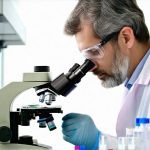Human movement isn’t simply about muscle strength; it’s a complex interplay between neurological processes, biomechanics, and physiological states. Often overlooked in discussions of athletic performance and everyday function is the profound impact of body temperature on our capacity to generate force – what we colloquially call ‘strength.’ While we often think of strength as a relatively fixed attribute, determined by muscle mass and training, it’s demonstrably dynamic, shifting based on internal and external conditions. This variability isn’t merely about comfort; it directly affects the quality and safety of movement, impacting everything from athletic competition to injury risk during daily tasks. Understanding how temperature influences our strength allows us to optimize performance, improve recovery strategies, and potentially even prevent injuries by acknowledging the body’s fluctuating capabilities.
The relationship between body temperature and force production isn’t linear; it doesn’t simply mean ‘warmer equals stronger.’ Instead, there’s a sweet spot – an optimal thermal range where muscles function most effectively. Below this range, muscle contractions become sluggish and less powerful. Above it, the risk of fatigue increases, and coordination can suffer. This is because temperature profoundly affects the biochemical processes within muscle fibers, nerve conduction velocity, and even joint lubrication. It’s a delicate balance that athletes and individuals engaging in physical activity must learn to navigate for peak performance and wellbeing. Ignoring this crucial factor means potentially leaving strength – and functional capacity – on the table.
The Science of Thermal Dynamics & Muscle Function
The underlying mechanisms linking body temperature to flow strength (the ability to generate force fluidly and efficiently) are multifaceted. At a fundamental level, muscle contractions rely on complex biochemical reactions. Temperature directly influences the rate of these reactions. As temperature increases within a reasonable range, enzymatic activity speeds up, allowing for faster and more forceful contractions. Think of it like accelerating a chemical process – warmer temperatures provide the energy needed to speed things along. However, this isn’t unlimited. Excessive heat can denature proteins (the building blocks of muscle), disrupting their function and ultimately reducing force production.
Nerve conduction velocity is another key factor. Nerves transmit signals from the brain to muscles, initiating contractions. Warmer temperatures facilitate faster nerve transmission, meaning quicker reaction times and more efficient muscle activation. Conversely, colder temperatures slow down nerve impulses, leading to delayed or weaker contractions. This explains why it can take longer to feel fully warmed up in cold weather – your nervous system is literally slower to respond. The effect isn’t just about speed either; temperature influences the precision of these signals, impacting coordination and control.
Finally, tissue elasticity plays a role. Muscles, tendons, and ligaments become more pliable and compliant with increased temperature, allowing for greater range of motion and reduced risk of injury. Imagine trying to stretch a cold rubber band versus one that’s been warmed up – the warmer band is far more flexible. This improved compliance also contributes to smoother, more efficient movement patterns. – Increased blood flow further aids in this process, delivering oxygen and nutrients to muscles while removing metabolic waste products.
Optimal Temperature Zones for Performance
Determining the “optimal” temperature zone for strength isn’t straightforward. It varies significantly based on individual factors like age, body composition, training level, and even genetics. However, research suggests a general range exists. For most individuals, peak muscle function occurs within a core body temperature of approximately 37-39°C (98.6-102.2°F). This is why warm-up routines are so crucial – they actively raise body temperature to this optimal level, preparing muscles for exertion. – A well-designed warm-up typically involves both cardiovascular activity (to increase blood flow and core temperature) and dynamic stretching (to improve range of motion and flexibility).
It’s important to distinguish between core body temperature and skin temperature. Skin temperature is more readily affected by the environment, while core temperature reflects the internal thermal state of vital organs and deep muscle tissues. Athletes often utilize external warming strategies like heat packs or warm clothing to elevate skin temperature before competition, but these measures have a limited impact on core temperature. – Focusing on active warm-ups that generate internal heat is far more effective than relying solely on passive methods.
However, exceeding the upper limit of this optimal zone can be detrimental. Hyperthermia (elevated body temperature) leads to fatigue, impaired cognitive function, and increased risk of heatstroke. This is why cooling strategies – like hydration, shade, and evaporative cooling – are essential during prolonged exercise in hot environments. The goal isn’t simply to get warm; it’s to maintain a stable core temperature within the optimal range for sustained performance.
Understanding Temperature’s Impact on Different Muscle Fiber Types
Muscle fibers aren’t all created equal. There are primarily two types: Type I (slow-twitch) and Type II (fast-twitch). These fiber types differ in their contractile properties, metabolic characteristics, and sensitivity to temperature. Type I fibers – responsible for endurance activities – tend to function relatively consistently across a wider range of temperatures. They are less affected by minor fluctuations in thermal state. However, even these fibers experience reduced performance when significantly cooled.
Type II fibers, which generate the majority of force during explosive movements and high-intensity exercise, are far more temperature sensitive. These fibers require higher temperatures to function optimally. – A colder environment can dramatically reduce the power output of Type II fibers, impacting activities like sprinting, jumping, and weightlifting. This is because they rely heavily on rapid energy production pathways that are slowed down by lower temperatures.
This differential sensitivity explains why athletes often focus on extensive warm-ups before events requiring explosive power. The goal is to elevate muscle temperature sufficiently to unlock the full potential of Type II fibers. Conversely, cooling strategies can be used during breaks in competition to prevent overheating and maintain optimal function of both fiber types. Understanding these nuances allows for a more targeted approach to thermal management.
Pre-Exercise Warming Strategies & Their Effectiveness
Warming up isn’t just about increasing muscle temperature; it’s a multifaceted process that prepares the body physically and mentally for exercise. Effective warm-up routines typically incorporate several components: – General cardiovascular activity (e.g., jogging, cycling) to raise heart rate and blood flow. – Dynamic stretching to improve range of motion and flexibility. – Sport-specific movements to activate relevant muscle groups and movement patterns.
The duration and intensity of the warm-up should be tailored to the specific demands of the activity. For example, a marathon runner will require a longer and less intense warm-up compared to a powerlifter. Research suggests that a minimum of 15-20 minutes is generally sufficient for most activities. However, more extended warm-ups may be beneficial in colder environments or for athletes with lower baseline muscle temperatures. – Using thermography to assess skin temperature changes during warm-up can help optimize the process.
Recent advancements in warming technology include heated garments and localized heat applications. While these methods can provide temporary relief from cold exposure, they are generally less effective than active warm-ups at raising core body temperature. The most crucial aspect of any warm-up is to actively engage muscles and generate internal heat through movement. – Focusing on quality over quantity; a short but well-executed warm-up is often more beneficial than a lengthy but ineffective one.
Cooling Strategies for Optimal Recovery & Performance
Just as warming up is essential before exercise, cooling down is crucial after exertion. Cooling strategies help regulate body temperature, prevent muscle soreness, and promote faster recovery. Hydration is paramount – replenishing fluids lost through sweat helps maintain blood volume and facilitates heat dissipation. – Electrolyte replacement is also important, particularly during prolonged or intense exercise.
Methods for active cooling include: 1. Removing excess clothing to allow for greater evaporative cooling. 2. Seeking shade or air-conditioned environments. 3. Applying cool water to the skin (e.g., using a spray bottle or wet towel). 4. Utilizing ice packs or cold compresses on specific muscle groups.
However, it’s important to avoid rapid cooling, which can constrict blood vessels and impede recovery. – Gradual cooling is more effective at preventing muscle soreness and promoting tissue repair. This involves transitioning from high-intensity exercise to lighter activity followed by a period of rest and hydration. Understanding the interplay between body temperature and muscle function – both during warm-up and cool-down phases – is critical for maximizing performance, minimizing injury risk, and optimizing overall wellbeing.





















